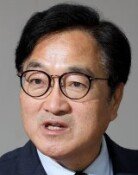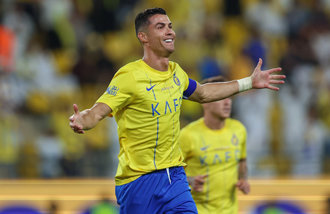ISS to Be Visible With the Naked Eye
Baek Hong-yeol, head of the Korea Aerospace Research Institute, said, Mission Control Center (MCC) succeeded in making radio contact with the International Space Station (ISS) and found that all crew members had no problems with their health. They have been successfully carrying out their tasks.
Daily work for Koreas first astronaut, Yi So-yeon, involves conducting a scientific experiment after completing a simple breakfast, which is set by the ISS management council.
Upon arrival at the ISS, Yi engaged in scientific investigations of plant seeds and fruit flies to observe if they have undergone any changes in a weightless state. Her research will continue until she returns home.
In addition, she also carried out experiments on facial change in a gravity-free state, using her cellular phone. One filming session is comprised of 20 snapshots with six second intervals. She will bring the memory chip containing her photos with her when she returns to earth.
A research team led by Professor Cho Yong-jin at Hannam University will closely examine the pictures. In an effort to help her take pictures with ease, Professor Cho sent space boots designed to prevent her feet from sliding.
The Ministry of Education, Science and Technology said Yi will invite other astronauts at the International Space Station (ISS) to hold a feast of Korean food prepared for the space mission on Saturday.
Cosmonautics Day, which began on April 12, 1961, was created to cerebrate the era of human spaceflight, which began when Cosmonaut Yuri Gagarin became the first human to orbit the earth on the Vostok 1 spacecraft.
Yi will provide Korean meals, including space kimchi, cooked rice, and doenjang (fermented bean) soup, which were developed by Koreas national research centers, such as the Korea Food Research Institute and the Korea Atomic Energy Research as well as domestic food companies.
Given that eating in space is a tricky task, space kimchi will be provided in the form of a canned food, while doenjang soup will be taken through a straw.
After the meal, space deserts, such as grain bars, sujeonggwa (cinnamon punch) and green tea that have been treated with radiation to sterilize germs, will also be provided. Instant noodles will be prepared by using 70 degree water for five minutes.
Once Yi makes two assessments of their space food, the data is likely to be utilized by domestic food firms and research institutes to further develop such items. There have been about 300 space foods developed worldwide, including the United States and Russia. 100 of them are in fact used for foods on board spacecrafts.
Yi will conduct new science experiments on Saturday. First, she will test eyeball pressure in an effort to figure out the relationship between non-gravity state and human health conditions using a special space scale for items weighing less than five kilograms. The scale was developed by Korean researchers and is expected to be used on the ISS if formal approval is received.
In addition, Zeolite, which is often referred to as boiling stone," can be used as a molecular sieve in cryosorption pumps for rough pumping vacuum chambers, which can be used to simulate space-like conditions in order to test hardware bound for space.
The space station carrying Yi will be visible from Korea with the naked eye for about seven minutes from 7:57 p.m. to 8:03 p.m. on Sunday.
Yi said she would wave her hands as the ISS passes over the Korean Peninsula during this period.
The ISS will also try to make radio contact with students at Hankwang high school, Pyeongtaek, Gyeonggi Province.
Yi is scheduled to return to earth on April 19 after finishing 18 space experiments with other crew members, including U.S. female astronaut Peggy Whitson and Russian cosmonaut Yuri Malenchenko. She is scheduled to land in Kazakhstan at 5.38 p.m.
Meanwhile, Ko San, who is in charge of communication, is expected to help Yis experiments as he commutes to the Mission Control Center from the Yuri Gagarin Cosmonaut Training Center, where he has been training for the past year.
kunta@donga.com dream@donga.com







